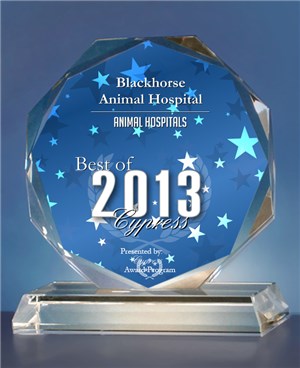Library
-
Allopurinol is an oral medication typically used to prevent uric acid and calcium oxalate stones in dogs. It is also used off-label to treat leishmaniasis and gout in dogs and other species.
-
Atropine ophthalmic (brand name Isopto Atropine) is an eye medication used to dilate (enlarge) the pupil. It is used off label (extra label) only, in all veterinary species of animals. Atropine ophthalmic comes in a 1% drop, solution, or ointment form, which is placed directly into the eye.
-
Chloramphenicol (brand names Chloromycetin®, Viceton®) is a broad-spectrum antibiotic used to treat many different bacterial infections in many species. Chloramphenicol comes as tablets, capsules, liquid suspension, and in an injectable form (chloramphenicol sodium succinate). Injectable forms will be administered by your veterinarian.
-
Chloroxylenol topical, also known as PCMX, is a topical antiseptic used on the skin prior to surgery and in wound cleaning in cats, dogs, and exotic species. It has been used to treat bacterial, fungal, and yeast skin infections. It is toxic to aquatic species. All forms are applied topically directly to the skin.
-
Cisplatin is a chemotherapy drug used to treat various forms of cancer and solid tumors in animals. It is prescribed off-label for use in dogs, horses, birds, and reptiles. It should not be used in cats due to potentially fatal side effects. Cisplatin is administered by injection, typically IV into the vein, by trained veterinary staff.
-
Clotrimazole topical is an antifungal used in the treatment of surface skin infections caused by fungal organisms in cats, dogs, rabbits, birds, reptiles, and other animals. Clotrimazole topical comes in a variety of forms that may be specially compounded and/or be combined with other medications. All forms are applied topically.
-
Dexmedetomidine is a sedative/tranquilizer used primarily in cats and dogs as a pre-medication injection for anesthesia or for chemical restraint. It is also used orally in dogs for short-term anxiety management. The most common side effect is a low heart rate. Dexmedetomidine should not be used in patients with severe heart liver or kidney disease. It should be used cautiously in young, old, or weak animals. Consult your veterinary office immediately if you suspect a negative reaction or overdose.
-
Emodepside + praziquantel (brand name Profender®), is an antiparasitic drug used to treat and control hookworms, roundworms, and tapeworms in cats. Emodepside + praziquantel comes in topical solution form that is applied directly to the skin.
-
Hypochlorous acid (HOCl) topical is used for the management of skin conditions such as wounds, abscesses, cuts, abrasions, skin irritations, ulcers, post-surgical incision sites, and burns. It may be used to prevent or treat bacterial skin infections, including methicillin-resistant staphylococcus aureus (MRSA). Hypochlorous acid also has antifungal and antiviral properties and is reported to reduce inflammation, pain, and itching.
-
Midazolam is a benzodiazepine used for its sedative, anti-anxiety, and muscle relaxant properties. It is primarily used as a sedative before surgery and to stop seizures. It is used “off label” or “extra label” in animals. This medication is a controlled substance primarily given via injection by your veterinary team, though it may be prescribed to your pet for intranasal or intrarectal administration at home.



